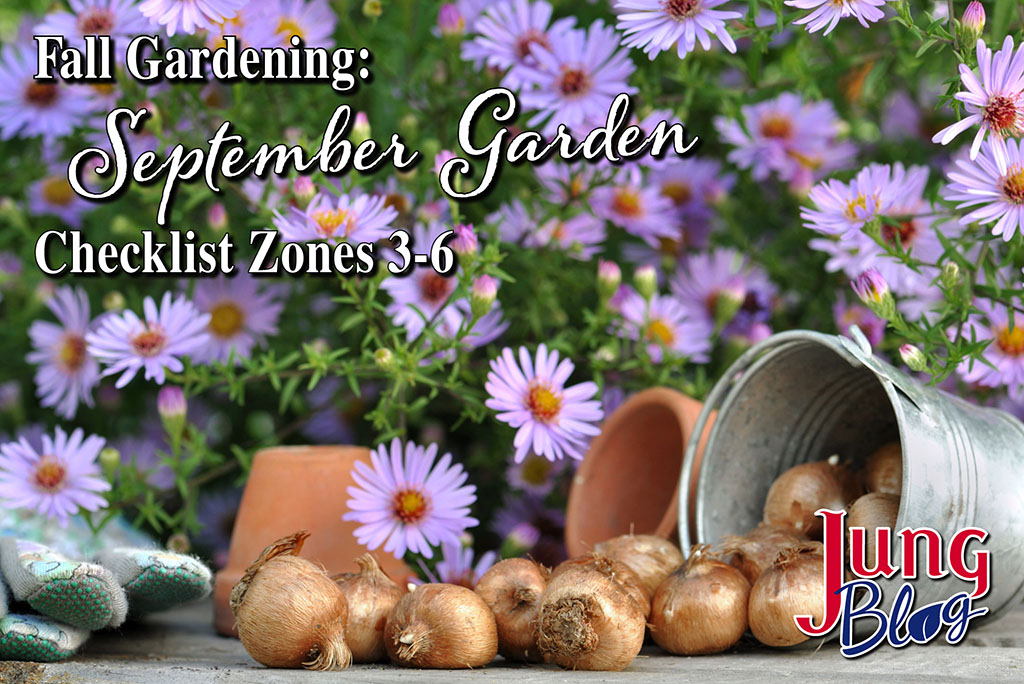
For many of us, September is a transition month from summer to fall. We can get a head start on the cooler weather by accomplishing a few tasks in the landscape. Here are a few tips to get you started.
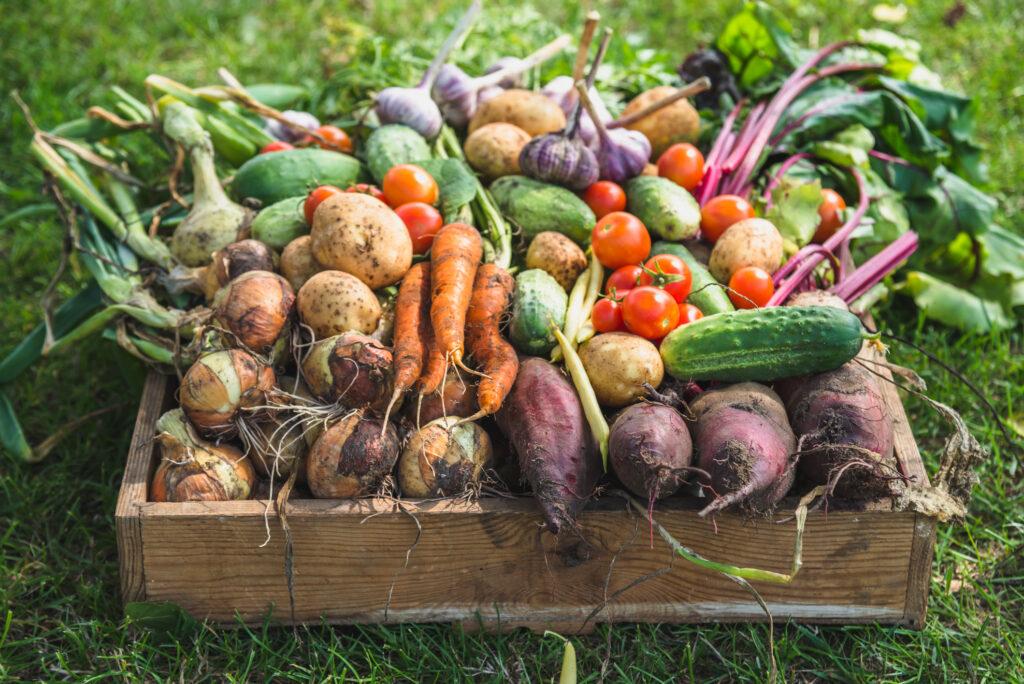
Veggies and Herbs
- During September, frost may arrive for some northern gardeners. If the frost is light, you can cover your veggies to keep the plants alive for a couple more weeks, depending on your forecast and location. Covering the plants will allow you to continue harvesting a bit longer. For cool-season veggies, the frost is not a problem as the cold weather often enhances the flavor of lettuce and other cool-weather crops.
- If you’re expecting a hard freeze, plan on harvesting warm-season veggies, like tomatoes, cucumbers, and peppers, before the cold temperatures arrive. Tomatoes that are starting to show color can ripen indoors on a windowsill. You can remove small green tomatoes from the plants to speed up the ripening process.
- You can dig up herbs from pots and bring them indoors for the winter. These plants require lots of light, so keep them in a south-facing window or use a grow light.
- You can harvest herbs and preserve the flavor by drying or freezing them.
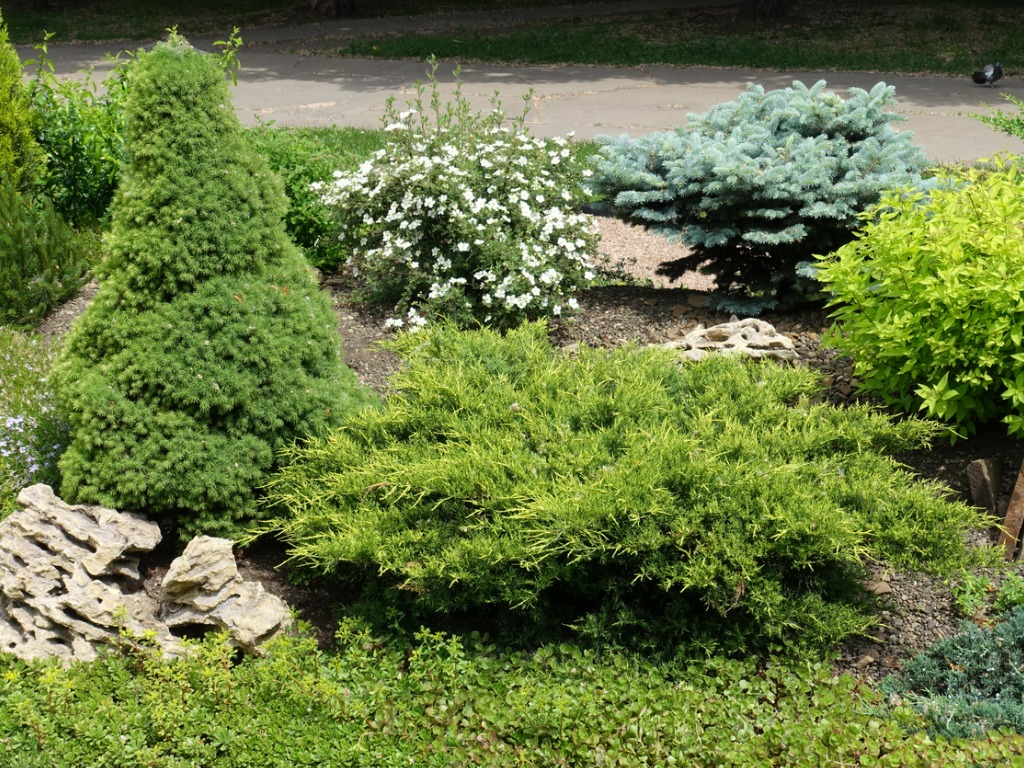
Trees and Shrubs
- September is an excellent time for planting trees and shrubs because the air temperatures are cooler, but the soil is still warm, allowing for quick root growth on woody plants. Now is also a good time for planting evergreens. Remember to water new trees and shrubs until the ground freezes, generally in November or December, depending on your location.
- If you have shrubs that need pruning, waiting until late winter or early spring is better. Pruning in September may encourage new growth that is tender and prone to winter damage.
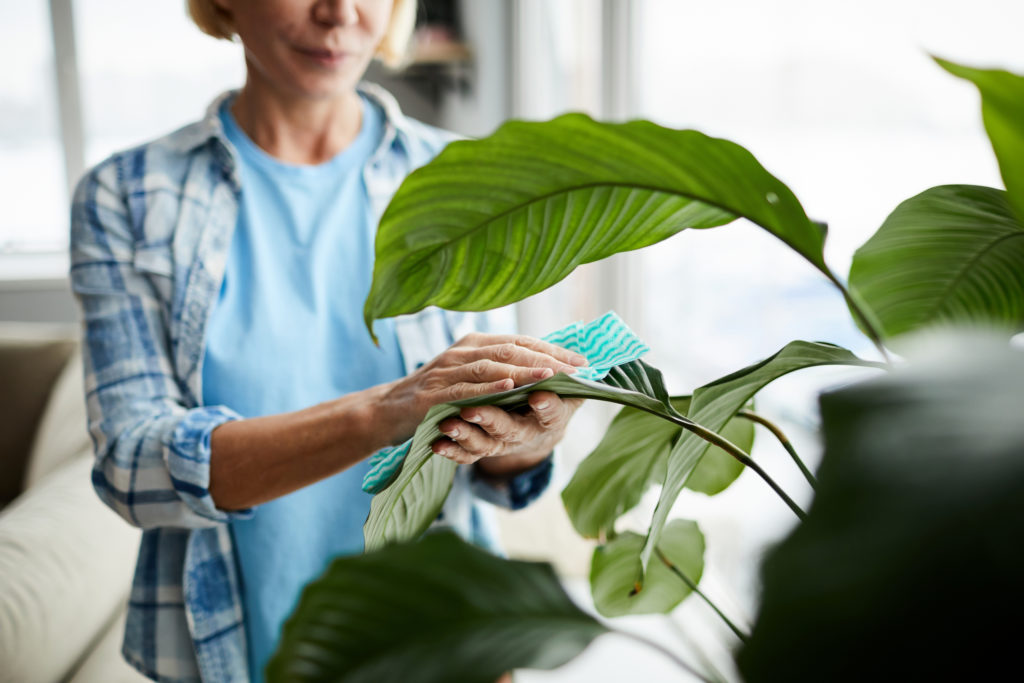
Annuals and Houseplants
- Now is the perfect time for taking cuttings of any annuals you’d like to keep indoors for winter. You’ll want to keep the cuttings out of direct sun and bring them indoors if night temperatures drop below 50°F. Once inside, the cuttings can be left on a sunny windowsill or under a grow light for winter. It’s best to use potting mix for cuttings, not garden soil.
- Many of us have kept houseplants outside to enjoy the sun and warmth, but now it’s time to begin moving the plants indoors. Your local weather will determine how long to leave houseplants outside. Still, it’s a good practice to bring them indoors once night temperatures drop below 50°F regularly.
- Insect pests love the warmth of homes in winter, so it’s good to check your houseplants for insects before moving them inside. Rubbing alcohol can remove many types of pests; for some insects, you can blast them with streams of water from a hose. However, we should always identify the type of pest to understand the best way to remove them.
- As temperatures cool, consider adding fall annuals to your outdoor pots. Common plants for fall displays include Ornamental Kale and Cabbage, Purple Fountain Grass, Celosia, Dusty Miller, Asters, and Mums. Perennials, like Rudbeckia and Heuchera, are also great plants in fall displays. Along with plants, many people use pumpkins, berries, or artificial leaves to add texture and accents to the pots.
- If you have tropical bulbs in your beds, like Cannas or Gladioli, now is an excellent time to prep them for winter. You can leave them outside until a frost kills their foliage or dig them up and let the foliage dry before storing them. Let the bulbs and foliage dry for at least 7-10 days before storing them for winter. Remember to check for pests before storing them in storage.
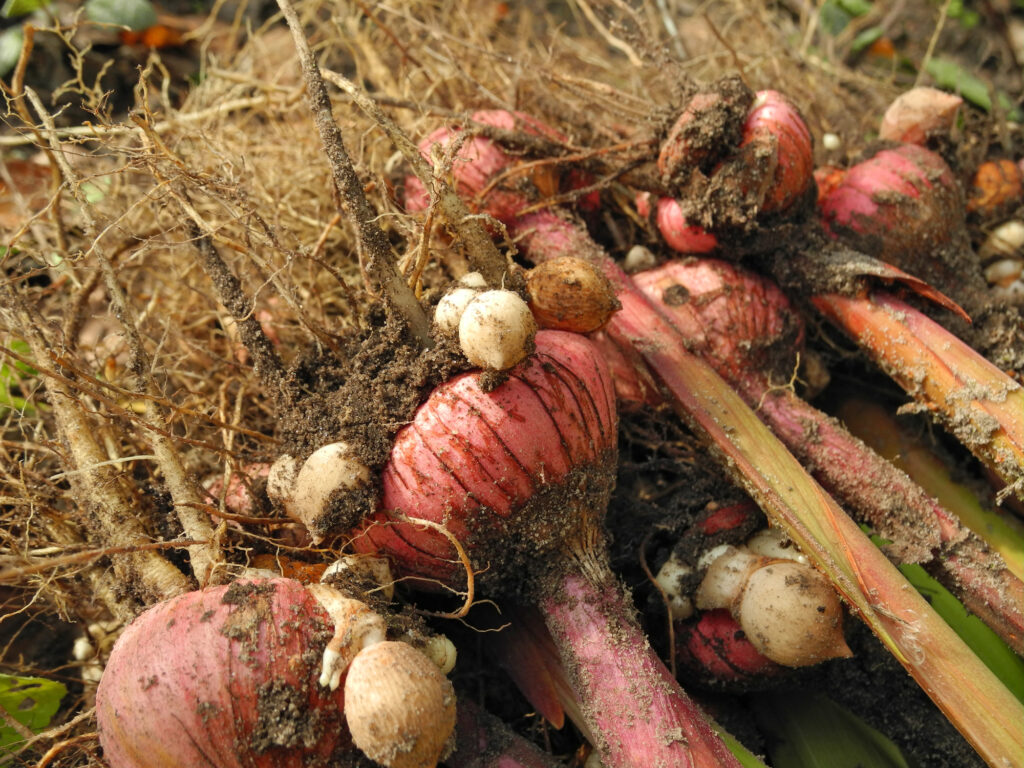
Perennials and Bulbs
- Do you have perennials that need division? September is a perfect time to make those divisions and create new plants for your landscape or share them with a neighbor. To make this process easier, remove all the foliage from the plant before dividing, allowing you to create clean divisions. The plants will look bare for a while, but they’ll return next spring with vigorous new growth.
- As the soil cools, it’s time to plant spring-blooming bulbs, such as Daffodils, Tulips, and Crocus. For most of us, bulbs should be planted from mid-September until late October or even November. We can plant bulbs until the ground freezes, but it’s ideal to plant them roughly six weeks before the ground freezes. Earlier planting allows better root establishment before winter.
- Perennials can be cut down in fall (Usually in October after a freeze) or spring, but you can help pollinators by leaving the stems until spring. Some perennials, like Coneflowers and Grasses, provide winter structure and a food source for birds.
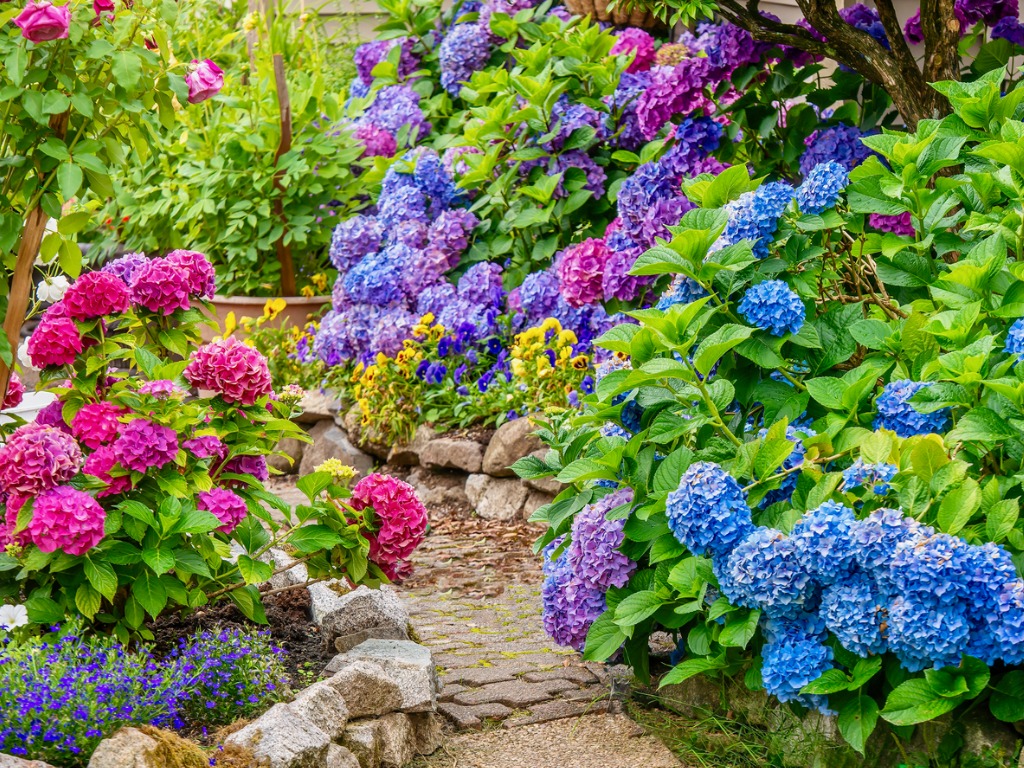
Special Notes
- The plants in our gardens have reached their peak size for the year, so take a few moments to look for areas that could use fresh color or unique texture. And remember, the best way to prevent weeds is to create a landscape full of desirable plants, leaving little space for weeds to take over.
Also, less visible soil in the garden means less sunlight for weeds to germinate. However, there’s a difference between full and overgrown. A full garden bed will have plants that fill in the extra space without crowding out each other.
- Any time of year is good for taking photos of your landscape; if you still need to take pictures, September is an excellent time to start. Like me, there’s a good chance you’ll be sitting inside this winter and thinking about plans for next year’s garden, and having images to remind you how the garden looks every season is a huge help.
- If the blooms are fading in your garden, take a walk around your neighborhood and look for plants full of color, then make a list of potential fall-blooming plants to add to your landscape. A few examples are Aster, Mums, Monkshood, and Rudbeckia.

Remember, there’s still time to enjoy your garden before the cold weather arrives, so head outside and enjoy the rest of the growing season!
Other Recommended Reading
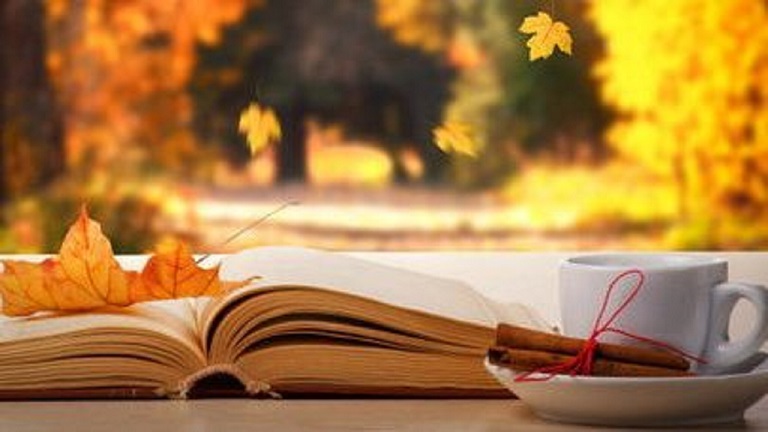
- Fall Gardening: Using Fall Leaves In The Garden
- Tips For Gardening Success: Healthy Soil
- Fall Composting for Beginners
- 8 Useful Tools For Your Garden
- An Easy Guide To Forcing Bulbs

At Jung Seed Co, we strive to be your go-to guide for all your gardening needs. Our YouTube channel The Garden Doctor by Dick Zondag is where he provides gardening tips for all levels of gardeners. When you need reliable gardening advice, turn to the trusted experts at Jung.
If you are in the Wisconsin area, please visit us at one of our Jung Garden Center locations for all your gardening needs. Otherwise, you can browse our website. To receive info on new products, exclusive deals, and specials, be sure to sign up for our weekly email. Join our Facebook page, to discuss all things gardening!
About the Author: Matthew Olson is a professional horticulturist and garden writer. He has a bachelor’s degree in horticulture from UW-River Falls and is a certified professional with the Minnesota Nursery and Landscape Association. His enthusiasm for plants and the outdoors brought him to the green industry. He regularly writes articles about gardening for both gardeners and industry professionals. He can be reached at matt@mattolsonhorticulture.com.